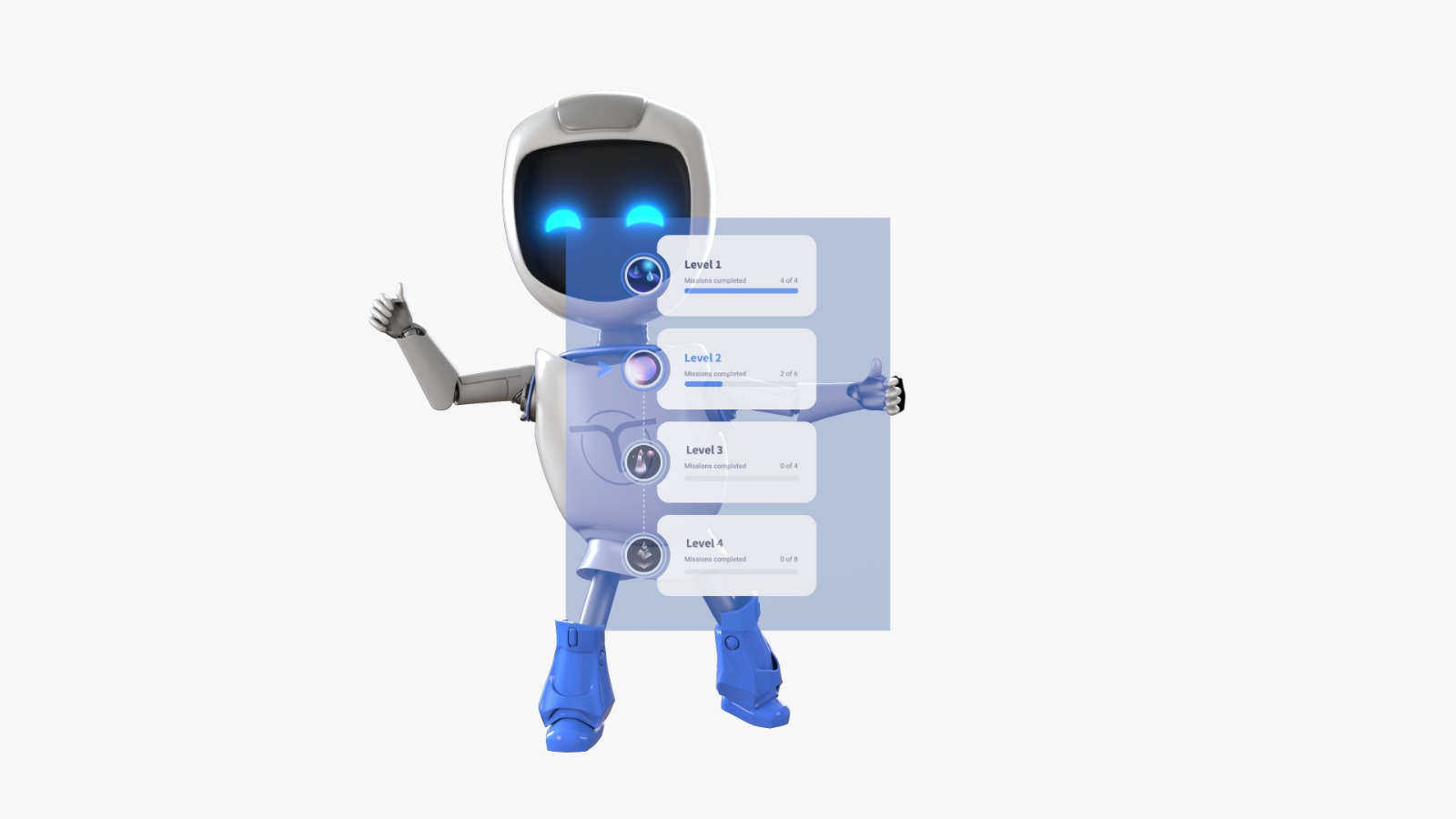A Call for Transformation of Corporate Learning and Training
Companies need to stay on top of the modern developments of the training world in order to make the most of the available corporate training opportunities. The training industry has seen major shifts in recent years – and digitization of corporate learning and training is one of those. The main driving forces behind this change are the reshaping of the workforce and the aftermath of the COVID19 pandemic.
Millennials are expected to make up 75% of the workforce by the end of 2025. Hence, companies need to adapt to their preferred way of learning. Secondly, with the spread of COVID19 across the world, rethinking the implementation of training initiatives is the need of the hour.
Let’s go into the details of why you need to digitize your training and how to go about it.
5 Reasons for Transformation of Corporate Learning
1. COVID19 Has Triggered an Irreversible Digitization Storm
In the wake of the ongoing pandemic, the transformation of corporate learning and training is the need of the hour. COVID19 has upended things in the training arena and the changes are likely to be irreversible. The only way businesses can move forward is to embrace the new normal and adopt a model that embeds deeper digital interactions.
Since many of your employees are probably still working from home now, you must tap into the opportunities offered by digital learning platforms. Stop seeing it as a forced-choice and understand that digital learning experiences can actually make your employees more efficient and productive.
Digitization of corporate learning allows you to cater to the different learning styles of employees by employing a digitally-focused blended learning approach. Besides being cost-effective, this approach ensures fast delivery of information across platforms, personalized learning experience for employees, and collection of real-time feedback. That being said, you should focus on making the learning experience as engaging and sustainable as possible, more so than the content itself.
2. Your Training Efforts Aren’t Aligned with the Needs and Preferences of Modern Learners
Modern learners are tech-savvy and are past everything traditional. They use a variety of digital devices and platforms to quench their thirst for knowledge. In just one hour, they switch between 25 different media types. Let that sink in!
How can you then expect them to sit through long and might we say boring training and learning sessions?
They won’t retain any knowledge in a lecture-based training session and the chances are that they will forget what they picked up in about a month. You must understand that they expect the integration of technology into the learning process. Hence, the best way to meet the demanding needs of modern users is by mixing traditional and digital content.
With a blended learning approach, try to make learning as engaging and interactive as possible by adding videos and multimedia resources in your training mix.
Another thing to keep in mind is that modern users want to learn on the device of their choice and at a time and location that suits them best. Digitization of corporate learning and training will help you cater to the needs of the modern audience.
3. You’re Throwing It All Together
Many organizations fail to increase training engagement and knowledge retention because of a complicated learning process. Their training materials are hard to understand and digest and employees quickly lose interest in them. If you can relate, it’s time to ditch the traditional training approach and capitalize on the microlearning trend!
Microlearning is all about presenting large volumes of information in small chunks, making it easier for the employees to grasp and remember everything. Generally, microlearning sessions last on average 5-7 minutes. Each session focuses on a particular topic and keeps the employees engaged, allowing them to acquire a specific skill.
Microlearning seems to be a near-perfect training approach for organizations that want to stand out from the competition considering the fast-paced lifestyle and short attention spans of modern-day people.
4. Tracking Employee Performance is a Hassle
Tracking your employees’ performance is an excellent way to gauge the success of your training programs. If you’re still relying on the traditional classroom-based learning approach, the performance tracking process may be challenging and time-consuming. Besides, there’s always a risk of errors.
On the other hand, digitization of corporate learning and training allows for instant and accurate insights into its success. Digital training platforms often come with built-in data analytics and reporting so you can stay on top of problem areas. You may also find out if your employees actually completed the training program, how engaging they found the training materials, and which sections they found hard to grasp.
Digitizing your training strategy will ensure that your lesson plans are easy to comprehend and engaging for the employees, and they allow you to identify areas where you can improve.
5. You’re Falling Short on the Personalization Front
Traditional training programs are designed to be taught uniformly to all the employees and they are usually not revised ever until absolutely necessary. In times when people expect personalization in all areas of life, these learning programs aren’t deemed impressive anymore. Employees are to be seen not as a group but as individuals who consume and process information in a unique way. Employees expect training programs to be aligned with their specific needs, role in the company, interests, and knowledge base. They also prefer learning on the go.
Personalized learning is the way forward – and digitization of corporate learning and training helps roll it out efficiently. By taking a personalized approach, you can design a curriculum that’s relatable and valuable for the employees, which they can learn at their preferred pace and location. Mobile devices and online learning techniques are great tools to teach and train your employees anytime, anywhere.
Top 7 Benefits of Digital Microlearning
Every organization has a few employees who dislike training sessions, especially if it’s still following the traditional training model. One way to make them look forward to a training session is by adopting the microlearning approach.
Below are the top benefits of digital microlearning for businesses.
1. Makes the Learning Process Less Intimidating
Let’s face it; anyone would naturally dread taking out time from their busy schedule for an extensive course that looks complicated on the outset. It would suck the excitement out of the employees and make them nervous about taking in so much information at once, especially if they are new workers. Microlearning allows your employees to enjoy the learning process by reducing the course to small chunks and eliminating apprehension from the equation.
2. Course Production is Easier and Quicker
Did you know that it takes approximately 28-143 hours for instructional designers to create a traditional training course of one hour?
With microlearning, this time can be reduced significantly! On top of that, you can use digital technology to create an interactive training course with a long list of content in a short period. While it saves plenty of time, you also get to cut down your course production expenses.
3. Improves Knowledge Retention
Microlearning makes it easier for the employees to absorb, process, and retain information – and it makes complete sense how. Since information is divided into smaller chunks, the recipients find it easy to digest. Their brain transfers the bite-sized information into long-term memory, significantly increasing the chances of knowledge retention. The idea is to present no more than four pieces of information because only a few people can absorb more than that. With most people, mass knowledge gets forgotten or over-written.
4. Makes the Learning Process Fun
If your training programs have been a constant fail, consider rethinking your strategy instead of assuming that your employees are incompetent. While people like learning new things, they don’t want to be told what to do. If you’re adamant about making your employees sit in a classroom-like setting and watch a long video or attend a lengthy, boring lecture and then asking them questions, you’re doing it wrong.
Microlearning is a great approach to make things exciting and even competitive. The best kind of learning happens when your employees don’t realize they’re expected to learn something.
5. Makes Deployment Hassle-free
The problem that most companies face with extensive training courses that involve large digital multimedia files is that they can’t ensure easy access for all employees. When multiple employees try to access the training materials during the same time, the network may get clogged up. And don’t even think of emailing the course material to individual employees.
Microlearning is the ideal solution to this problem, as it is easy to deploy. The lessons come in smaller files and employees are rarely required to download them in one go.
6. Lessons Can Be Taken on the Go
In modern times when employees want to learn at their preferred time and location, microlearning is an excellent alternative to the traditional training model. It allows businesses to leverage the power of technology so that employees can access the training materials on their smartphones on the go.
7. Increases Training Effectiveness While Reducing Costs
Extensive training courses equal complex infrastructure and management. Switching to the microlearning approach allows businesses to cut down the cost of training significantly. It also helps save time, as microlearning lessons can be prepared in a few minutes by anyone using a template.
Final Words
Now that blended learning and microlearning have taken center stage, the traditional classroom-based training seems to be a thing of the past. Microlearning ensures that organizations are taking full advantage of training opportunities and employees receive an exceptional learning experience. It is the future of corporate training and companies that dismiss the importance of digitization now will fall back halfway through the race tomorrow.
Code of Talent strives to help organizations take their corporate learning and training game to the next level by capitalizing on the power of microlearning. It allows trainers and L&D professionals to track the success of training sessions and ensure that employees find the learning process relatable and engaging. To jump on the bandwagon of digitization of corporate learning and training and make training fun and result-oriented, contact us today!





